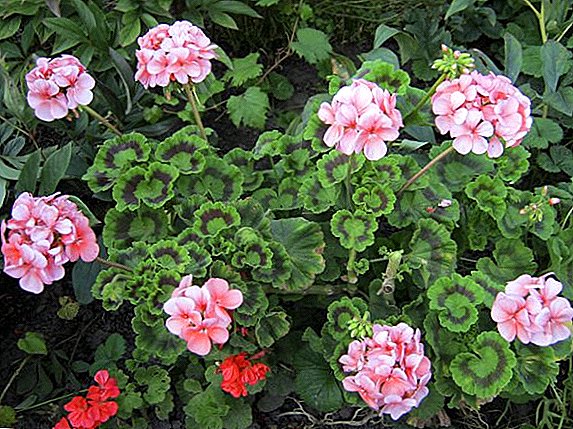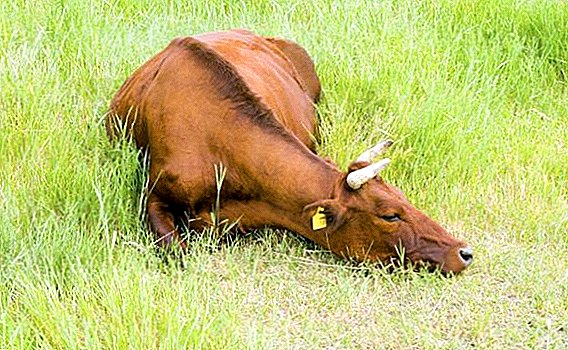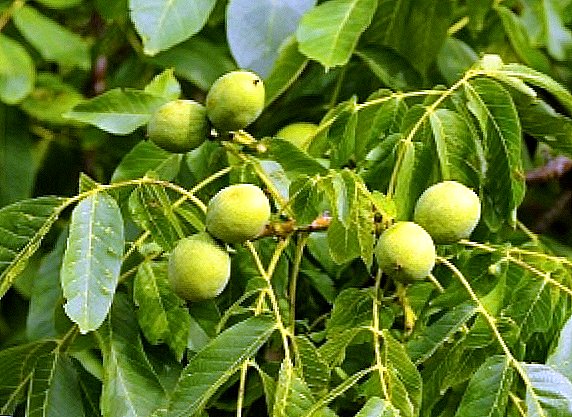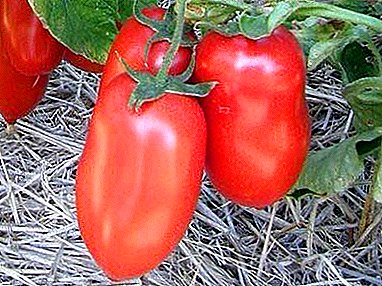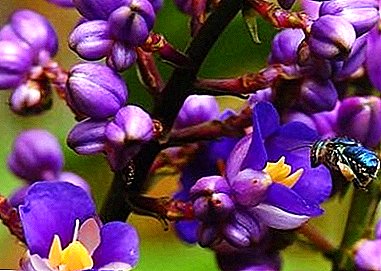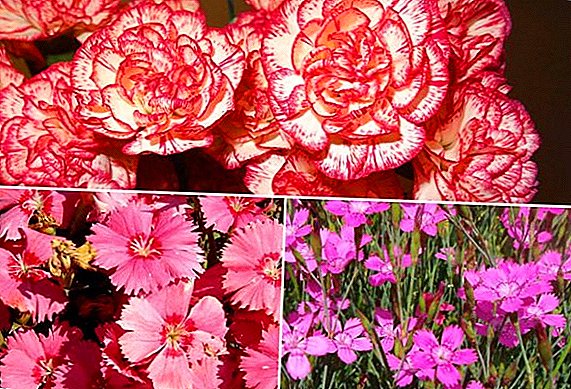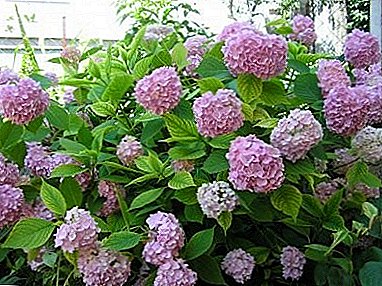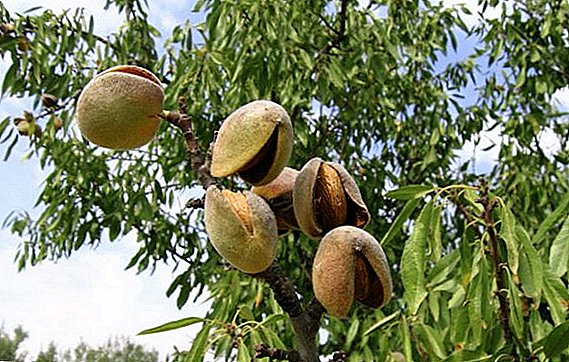 The almond plant is a small but very valuable fruit tree or shrub that is a relative of the plum. Contrary to popular belief, almonds are not nuts; they are hard stone fruit. Asia is considered the birthplace of this plant, but at present almonds grow in many parts of the world, it is successfully grown in some states of the United States, in the Tien Shan mountains, China, in Europe, almonds are common in the Mediterranean countries and in the Crimea, as well , as is known, is located at the junction of Asia and Europe.
The almond plant is a small but very valuable fruit tree or shrub that is a relative of the plum. Contrary to popular belief, almonds are not nuts; they are hard stone fruit. Asia is considered the birthplace of this plant, but at present almonds grow in many parts of the world, it is successfully grown in some states of the United States, in the Tien Shan mountains, China, in Europe, almonds are common in the Mediterranean countries and in the Crimea, as well , as is known, is located at the junction of Asia and Europe.
Almond grows in small groups on rocky slopes rather high above sea level. It prefers sunny places and is not afraid of drought, having a well-developed root system. The plant is cold-resistant, but it does not tolerate frost during the growing season. The soil for almonds must contain a large amount of calcium. Light pink five-petal flowers begin to bloom in late winter - early spring, and fruits appear in early summer. The average lifespan of a tree is a hundred years, but sometimes almonds live much longer. The period of fruiting - from the age of five to thirty - fifty years. Almond is a cross-pollinated plant.  Fruits of almonds are green, covered with short fibers, similar in shape to apricot, which after full maturity cracks along the internal seam. Thus, the almond fruit is similar to a nut, although the plant itself is not a nut. Fruits of almonds are very tasty, dietary and at the same time highly nutritious - the amount of oil in some species of the tree reaches almost 70%, protein - up to 35%. In nutritional value, almonds surpass not only all the usual fruits and vegetables for us, but even wheat, beef, milk and fish.
Fruits of almonds are green, covered with short fibers, similar in shape to apricot, which after full maturity cracks along the internal seam. Thus, the almond fruit is similar to a nut, although the plant itself is not a nut. Fruits of almonds are very tasty, dietary and at the same time highly nutritious - the amount of oil in some species of the tree reaches almost 70%, protein - up to 35%. In nutritional value, almonds surpass not only all the usual fruits and vegetables for us, but even wheat, beef, milk and fish.
Also in the almonds are many vitamins and microelements, thanks to which the famous medieval physician Ibn Sina (Avicenna) used this plant in the treatment of the liver, spleen and kidneys. Due to its composition, almonds are indicated for diabetics, asthmatics and ulcers, and are also taken for gastritis, headaches, and nervous exhaustion. This plant tends to soothe and simultaneously stimulate the brain.
 Almond oil cleanses the bladder and kidneys, reduces the content of bad cholesterol, is used for inflammation of the lungs, various sprains, and even contributes to the treatment of certain oncological diseases. In the people it is believed that almond oil helps to get rid of age spots, freckles and dandruff (if you mix it with wine and rub it into your hair), as well as take it with a strong cough.
Almond oil cleanses the bladder and kidneys, reduces the content of bad cholesterol, is used for inflammation of the lungs, various sprains, and even contributes to the treatment of certain oncological diseases. In the people it is believed that almond oil helps to get rid of age spots, freckles and dandruff (if you mix it with wine and rub it into your hair), as well as take it with a strong cough.
Almond fruits are high in calories, so they should not be abused. Nevertheless, the balanced composition of these fruits allows even people suffering from overweight to take it for a figure without special fears.
Important! Unripe almond kernels contain cyanide, in addition, poisonous prussic acid is present in some varieties. Such fruits should be used with caution and only after pre-frying. Glycoside and amygdalin, which are contained in large quantities in the fruits of almonds, are deadly to humans, for the onset of a lethal outcome it is enough to eat only a few dozen grains.
 Almond is an excellent additive to confectionery. It sets off and enhances the taste of chocolates and other sweets, it is also added to various marmalades, jams, pastes, cheese curds and ice cream. Almond flour as a wheat flour substitute is used in gourmet cakes and pastry recipes. Pasta is prepared from crushed almond kernels, which is an independent delicacy, as well as an ingredient to enhance the taste of other products and saturate them with a unique almond flavor.
Almond is an excellent additive to confectionery. It sets off and enhances the taste of chocolates and other sweets, it is also added to various marmalades, jams, pastes, cheese curds and ice cream. Almond flour as a wheat flour substitute is used in gourmet cakes and pastry recipes. Pasta is prepared from crushed almond kernels, which is an independent delicacy, as well as an ingredient to enhance the taste of other products and saturate them with a unique almond flavor.Did you know? Almond flour and marzipan made on its basis was previously used for the treatment of psychiatric diseases. In the years of hunger, due to its high caloric content, it was used daily to make bread as a substitute for absent ordinary flour.
Where to plant almonds
Although almonds are able to tolerate drought, dehydration can greatly harm the plant - it slows growth and begins to shed leaves, as a result, the harvest is reduced, not only this year, but the subsequent one. Also, productivity falls in low light, when almonds grow in areas shaded by other plants or buildings.
These features must be considered when making a decision on the breeding of almonds.
What types and varieties are best to plant
 Before growing almonds, it is necessary to determine the purpose of planting and, depending on this, choose the most suitable variety.
Before growing almonds, it is necessary to determine the purpose of planting and, depending on this, choose the most suitable variety.
There are more than forty kinds of almonds, but the most common is almond. Its height can reach six meters, but in dry places it grows with a low bush. Depending on the taste of the fruit, they emit bitter, sweet and brittle almonds, all of which are related to the plant species under consideration.
Almond varieties such as Pink Fog and Anyuta are very popular, but fruit growers prefer to grow White Sail.
If the purpose of growing almond is the decor of the plot, you should pay attention to such varieties as the three-lobed almond (it has a very beautiful one and a half meter crown and falling leaves, it blooms with bright pink or crimson flowers); "Ledebura" (different special aroma, large dark leaves and large light pink flowers) and "Petunnikova" (decorative dwarf shrubs with beautiful flowers of pink hue).
What soil is suitable for cultivation
 The almond tree does not make too high demands on the soil, it may well grow on rubble, in sand and stones. Optimally, the soil is light, fertile and has good drainage.
The almond tree does not make too high demands on the soil, it may well grow on rubble, in sand and stones. Optimally, the soil is light, fertile and has good drainage.
For this plant, acidic clay, saline, especially chlorine-containing soils are contraindicated, its root system does not tolerate the effects of high groundwater, as well as the absence of air and water permeability.
Almond Cultivation
How and when to plant almonds
Deciding how to grow an almond tree begins with choosing a place. In addition to the requirements for the composition of the soil and the abundance of light, it is necessary to provide the seedling with good protection from the wind. It is best to place the plant on the south side of the plot.
Planting almonds optimally in late autumn, planted in the spring the plant takes root worse.
Important! There is another secret: given that almonds cannot be pollinated independently, it is necessary to plant several varieties and specimens at once. The presence of other almond trees somewhere nearby does not solve the problem: in order to successfully pollinate the almond, insects need to be settled in a hive just near the plant.
 The technology of planting an almond tree is as follows. Pits a little more than half a meter deep are dug two to three meters apart from one another (this can be reduced for shrubs and dwarf varieties). Fine gravel or crushed stone is poured at the bottom of the pit, up to 10 cm of sand from the top, then top dressing, ideally phosphate fertilizers and manure.
The technology of planting an almond tree is as follows. Pits a little more than half a meter deep are dug two to three meters apart from one another (this can be reduced for shrubs and dwarf varieties). Fine gravel or crushed stone is poured at the bottom of the pit, up to 10 cm of sand from the top, then top dressing, ideally phosphate fertilizers and manure.
The trees are carefully placed in the hole (the root neck should be 10-15 cm underground), after which the hole is filled with fertile soil and is well packed.
Near-root circle with a radius of one and a half meters should be mulched. Peat is best used for this purpose. A support is driven in near the sapling, with which the young tree is tied to protect it from the wind.
Each seedling must be watered plentifully.
Almond Breeding
Almonds are propagated by seeds, cuttings, and root division of the plant.
Growing almonds from pits
Almonds can be grown from the stone, but in this case, the biological and product characteristics of the almond can be lost. In order to germinate the almond seed as best as possible, it should be soaked in a strengthening solution and planted at a distance of 15–20 cm from each other to a previously prepared, well-excavated site in late autumn or early winter to a depth of 10–15 cm In one hole can be laid on two bones, in this case, after germination leave a stronger seedling.  Bones can be planted in early spring, but before that, from the end of January to the beginning of February, they must be stratified (germinated in conditions similar to those of natural wintering) in the sand. The process lasts up to one and a half months at temperatures from zero to ten degrees above zero.
Bones can be planted in early spring, but before that, from the end of January to the beginning of February, they must be stratified (germinated in conditions similar to those of natural wintering) in the sand. The process lasts up to one and a half months at temperatures from zero to ten degrees above zero.
When the seedlings reach 10-15 cm, the roots of the plant at the same depth must be trimmed with a shovel, after which water abundantly.
Budding of seedlings is carried out at the end of summer in the area of the root collar, after which the oculant is spud. Annual seedlings need to be transplanted, otherwise they will not form a crown.
Propagation of almond cuttings
 To propagate the almond tree in this way, at the beginning of summer, cuttings of 15–20 cm in length (two nodes) are cut from the top of the plant and placed in a stimulating solution for several hours. After that, the cuttings are planted in the prepared mixture of sand and peat (1: 2 ratio) and placed in a cold greenhouse for 20-30 days. During this time, the cuttings must be fully rooted, after which the young almond tree continues its cultivation in the training bed.
To propagate the almond tree in this way, at the beginning of summer, cuttings of 15–20 cm in length (two nodes) are cut from the top of the plant and placed in a stimulating solution for several hours. After that, the cuttings are planted in the prepared mixture of sand and peat (1: 2 ratio) and placed in a cold greenhouse for 20-30 days. During this time, the cuttings must be fully rooted, after which the young almond tree continues its cultivation in the training bed.
Almond Cultivation
If the almond tree is very pruned, it gives abundant growth. In the second year after the onset, such sprouts can be separated, preserving the roots, and transplanted into a separate place.
Almond reproduction by layering
Almond seedlings can also be used for propagation by layering. To do this, it must be bent to the ground, pinned with a metal or wooden stud and lightly sprinkled with earth. Own root system of such shoots is formed in about a year, all this time they need to be watered regularly, weed around them and weed the soil. Subsequently, the seedlings are separated from the mother tree and planted in a permanent place.
How to care for almonds
To obtain a good harvest of almonds, it is necessary to observe not only the rules of planting, but also to provide a rooted plant with competent care in the open field.
How to water almonds
 Almonds need abundant watering only if it grows on sandy soil. The abundance of moisture is very harmful for the plant, but with a lack of water, the tree does not bloom well and does not bear fruit. Almonds should be watered when the soil around the plant has dried to a depth of about one and a half centimeters. The rate of watering is from seven to ten liters of water per bush.
Almonds need abundant watering only if it grows on sandy soil. The abundance of moisture is very harmful for the plant, but with a lack of water, the tree does not bloom well and does not bear fruit. Almonds should be watered when the soil around the plant has dried to a depth of about one and a half centimeters. The rate of watering is from seven to ten liters of water per bush.
Fertilizer and almond feeding
Almonds need a lot of strength so that the fruit is properly formed and poured; This feature of the plant determines the agrotechnology of its cultivation. In the spring, the adult tree is fertilized with organic matter and ammonium nitrate (20 g per bucket of water). In autumn, the soil must be fed with double superphosphate and potassium sulfate - 20 g of each and another per square meter.
Almond Pruning
Cutting and cutting almonds is very beneficial for the plant. Even flowering branches cut for decorative purposes will not damage the tree. Be sure to remove damaged and dried branches. It is necessary to form a tree as soon as it fades. Pruning is necessary for the almond nut, as it grows very quickly and without a proper hairstyle, it becomes untidy. In order for the plant to be pleasing to the eye, annual shoots should be pruned.
Almond Grafting
Almonds can be grafted not only on the plant of the same variety, but also on other varieties of almond, as well as plum, cherry plum or sloe. It is best to do this in the middle of spring or at the end of summer, when sap flow is especially active. The weather should not be too hot.
 A couple of days before the procedure, the stock must be poured very well (the bark should be easily separated) so that during the budding the bark is well separated from the wood. A graft is taken as a straight stalk with a formed bud, from which it is necessary to carefully cut the leaves, leaving, in order not to damage the bud, the cuttings of a few millimeters.
A couple of days before the procedure, the stock must be poured very well (the bark should be easily separated) so that during the budding the bark is well separated from the wood. A graft is taken as a straight stalk with a formed bud, from which it is necessary to carefully cut the leaves, leaving, in order not to damage the bud, the cuttings of a few millimeters.
In the area of the root collar of the graft (first it must be cleaned of dirt), an incision in the shape of the letter “T” is made with a sharp knife, and in the place where the incision lines converge, the bark is gently bent. From the prepared cutting, the flap with the bud is cut from such a calculation so that it fits into the prepared cut. When trimming the shield you need to capture, in addition to the bark, a little woody fabric. The cutting is inserted into the incision, covered by the bark and fixed with a tight bandage of adhesive tape or tape (the kidney must remain on the surface).
After 2-3 weeks, a control check is carried out: with a successful vaccination, the eye must be green and the petiole will disappear. After that the bandage can be loosened. If budding was carried out at the end of summer, the peephole should not be removed before spring. Eyes that have not taken root need to be re-counted.
In the spring, after the appearance of foliage, the strapping can be removed, the stock with a dried eye can be grafted with the help of a stalk prepared in advance.  When the height of the oculant reaches 10 cm, it is necessary to additionally pile it up, the procedure is repeated at least twice, as it grows up. Shoots, which gives the stock, should be removed, as well as side shoots that appear on the oculant.
When the height of the oculant reaches 10 cm, it is necessary to additionally pile it up, the procedure is repeated at least twice, as it grows up. Shoots, which gives the stock, should be removed, as well as side shoots that appear on the oculant.
Did you know? In the southern regions of the almonds, as a hardy, unpretentious and frost-tolerant plant, is used as a stock, peaches and apricots are grafted onto it, feeling quite confidently on such support.
Almonding
Almonds belong to frost-resistant plants, however if frosts in winter fall below -15 ° С, the tips of young branches and buds of flowers may freeze near the tree. To avoid this, at the end of the summer, it is recommended to pinch the ends of the almond shoots. In this case, the plant suspends growth, its wood, on the contrary, matures better, in connection with which the almond acquires additional resistance to frost.


